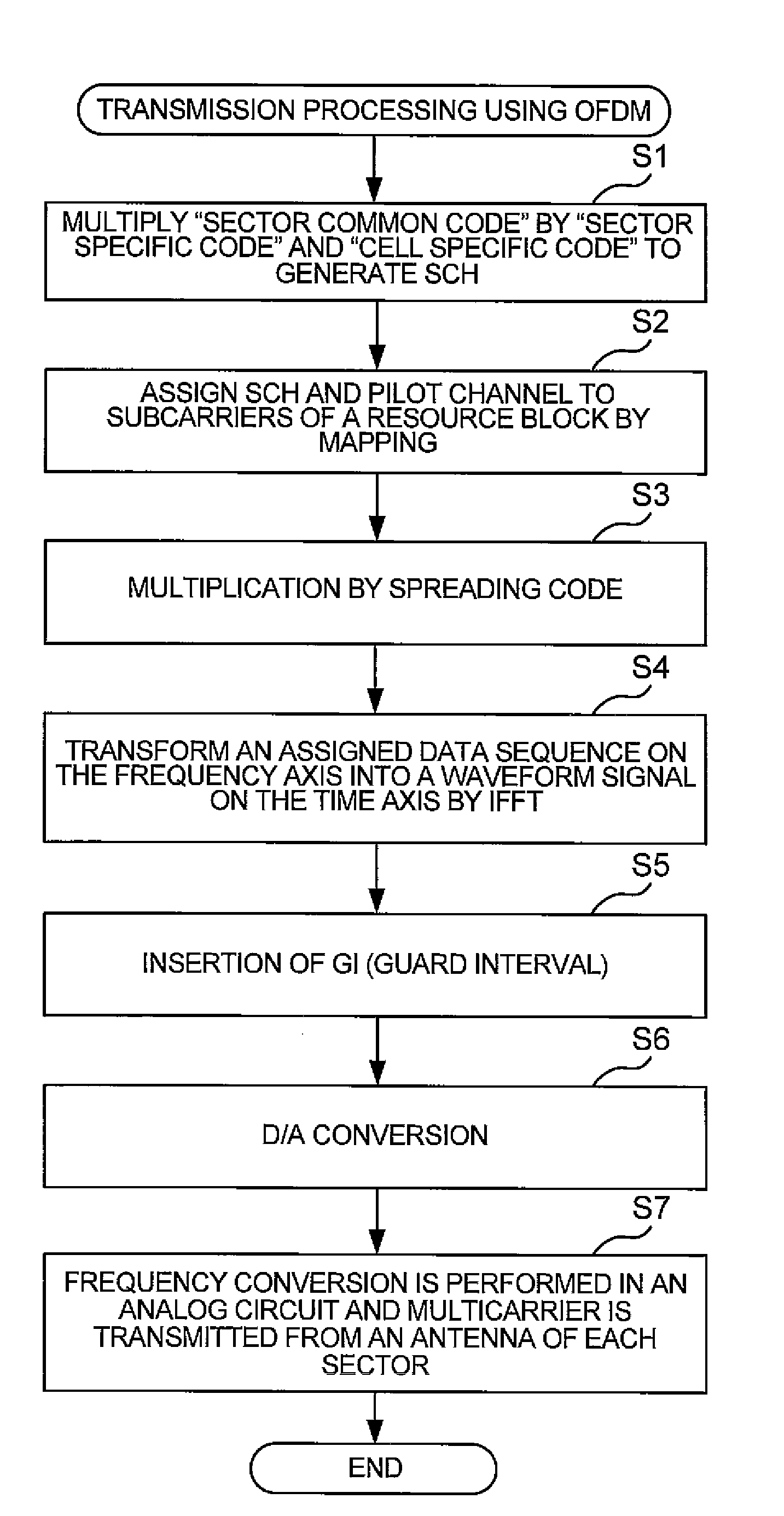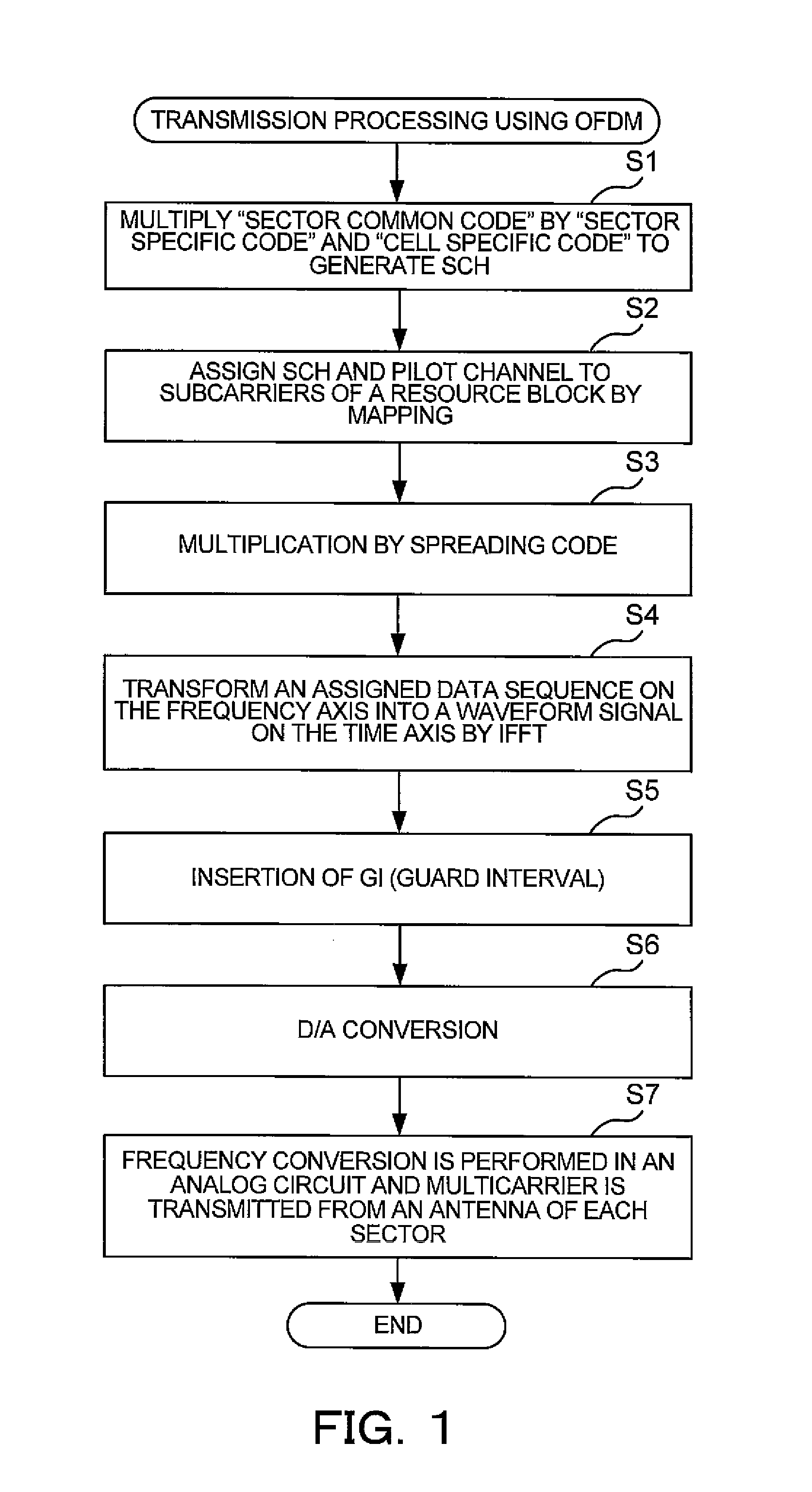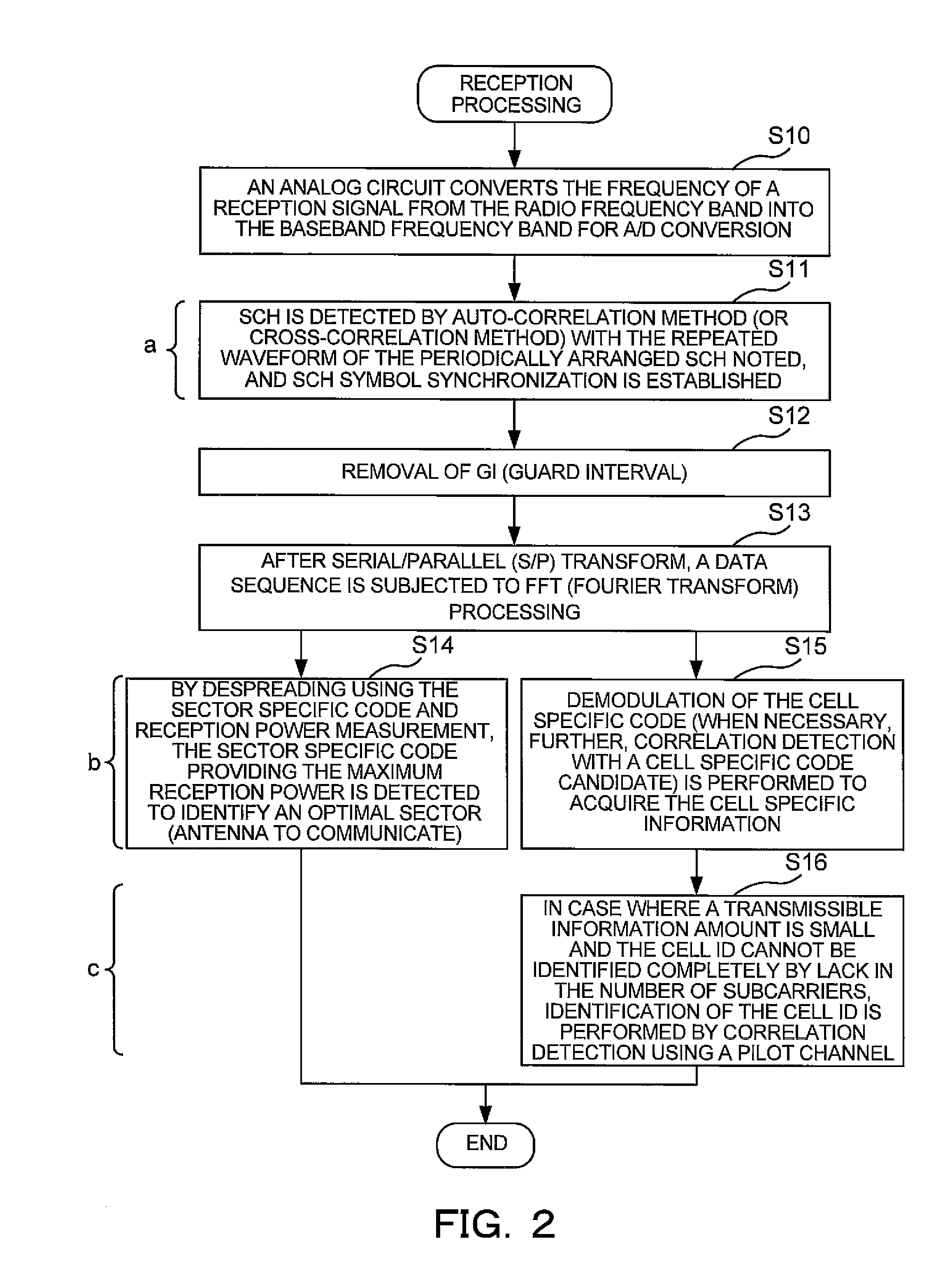Data generation apparatus, data generation method, base station, mobile station, synchronication detection method, sector identification method, information detection method and mobile communication system
a data generation and data technology, applied in the field of data generation apparatus, can solve problems such as difficult to completely shift from 3g to 4g, and achieve the effects of reducing memory capacity, enhancing anti-fading characteristics, and eliminating interference between sectors
- Summary
- Abstract
- Description
- Claims
- Application Information
AI Technical Summary
Benefits of technology
Problems solved by technology
Method used
Image
Examples
embodiment 1
[0169]Embodiment 1 describes a cell search method according to the invention. FIG. 1 is a flowchart showing an example of main procedures of multicarrier transmission processing according to the invention. As shown in the figure, a base station in a multicarrier mobile communication system adopting an OFDM communication scheme multiplies three kinds of code to generate a synchronization channel (SCH) included on downlink. In other words, the base station multiplies a “sector common code common in the same cell” by a “sector specific code (orthogonal code varying with sectors in the same cell)”, and a “cell specific code (code varying with cells to transmit cell specific information)” (step S1). The sector common code may be a common code in a plurality of cells.
[0170]Next, by assignment (mapping) in the time / frequency plane, the SCH and pilot channel are assigned to subcarriers of a resource block (step S2). Then, multiplication of spreading code and IFFT processing is executed (ste...
embodiment 2
[0194]This Embodiment describes a data structure of the SCH and a cell search method including sector identification, using the case where the SCH is arranged at the end of a sub-frame, as an example.
[0195]A cellular system is a mobile communication system comprised of a plurality of cells, and a cellular system used in this Embodiment is a one-cell reuse communication system in which each cell uses the same frequency band, and an OFDMA communication scheme is used as a communication scheme. As shown in FIG. 23, in this communication system, a cell is divided into three communication areas (sectors), and a base station located in the center of the cell performs wireless communication with mobile stations positioned in a plurality of sectors. The same frequency band is used in each sector, a pilot channel is multiplied by an orthogonal code specific to the sector, and by using despreading, accurate propagation path estimation can be made even near the sector boundary.
[0196]A downlink...
embodiment 3
[0251]Embodiment 3 of the invention will be described below. In Embodiment 2 shown above, the SCH is inserted for each frame (FIG. 24), and therefore, a null subcarrier is set every two subcarriers (FIG. 25).
[0252]In this Embodiment, as shown in FIG. 16, subcarriers except a subcarrier (DC subcarrier) in the center of the band are SCH subcarriers. Further, as an arrangement of SCH symbols in a frame shown in FIG. 19, the same SCH symbols are arranged in two consecutive symbols in a specific temporal position in the frame. FIG. 19 is a diagram illustrating a frame structure in Embodiment 3.
[0253]In other words, in this Embodiment, as compared with Embodiment 2 shown above, the number of SCH subcarriers is twice, and the code length usable in the cell specific information is increased. Accordingly, it is possible to transmit and receive a SCH signal with a larger information amount.
[0254]FIG. 16 is a diagram showing subcarriers assigned the SCH. In this Embodiment, the SCH is configur...
PUM
 Login to View More
Login to View More Abstract
Description
Claims
Application Information
 Login to View More
Login to View More - R&D
- Intellectual Property
- Life Sciences
- Materials
- Tech Scout
- Unparalleled Data Quality
- Higher Quality Content
- 60% Fewer Hallucinations
Browse by: Latest US Patents, China's latest patents, Technical Efficacy Thesaurus, Application Domain, Technology Topic, Popular Technical Reports.
© 2025 PatSnap. All rights reserved.Legal|Privacy policy|Modern Slavery Act Transparency Statement|Sitemap|About US| Contact US: help@patsnap.com



